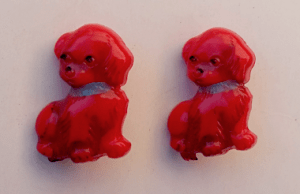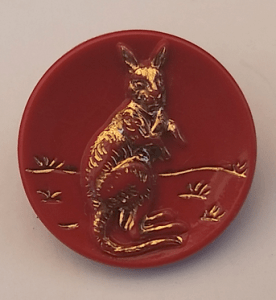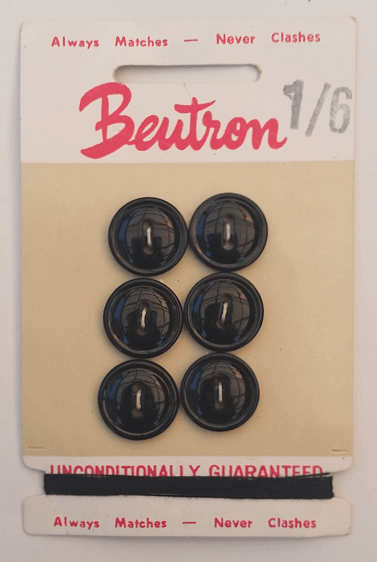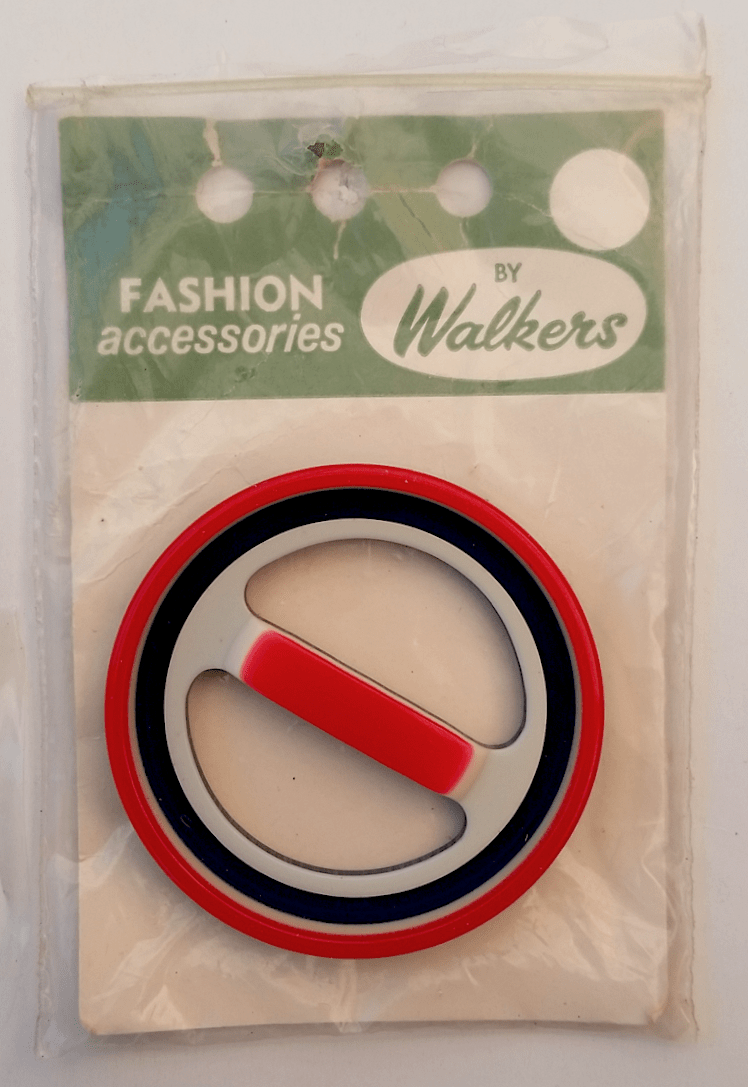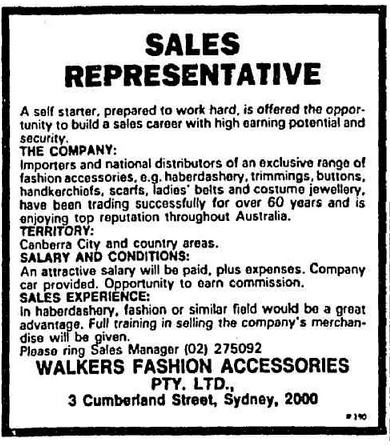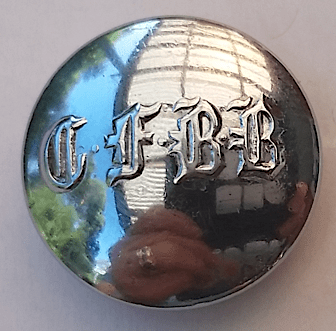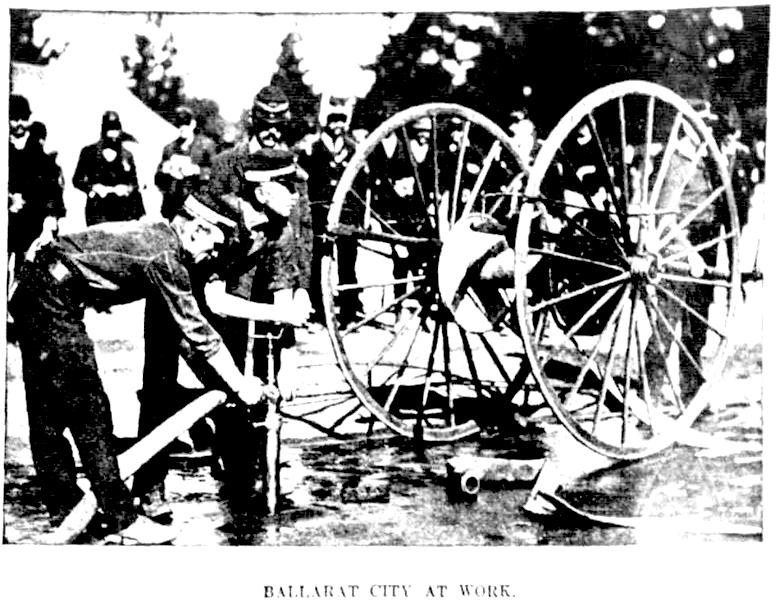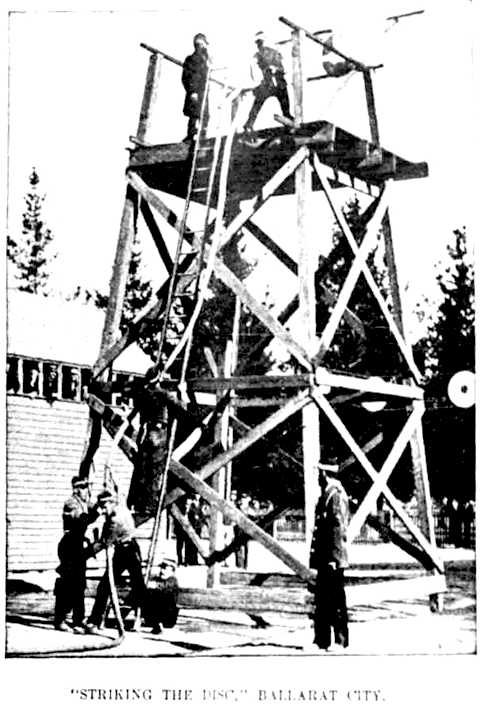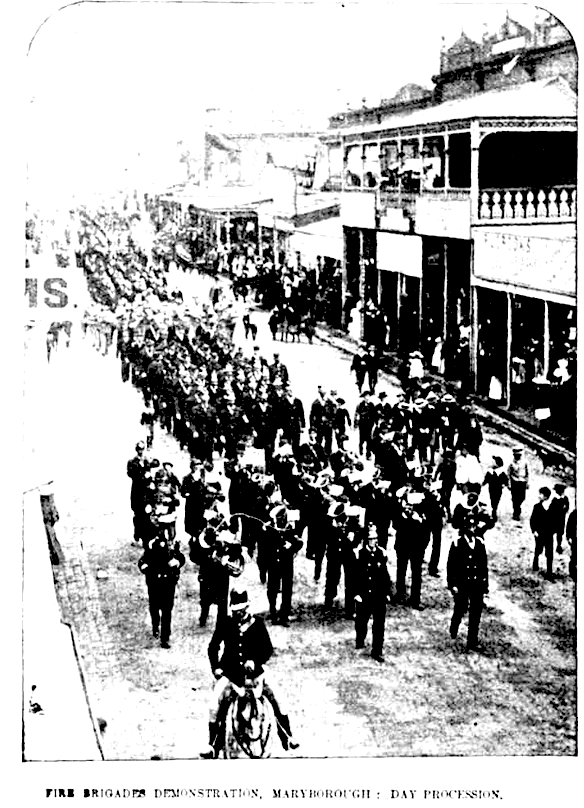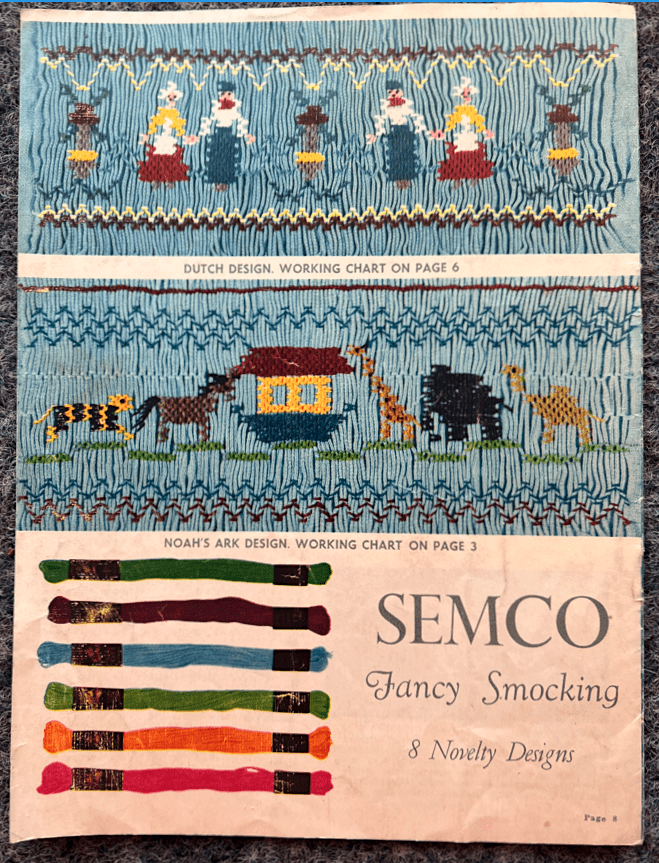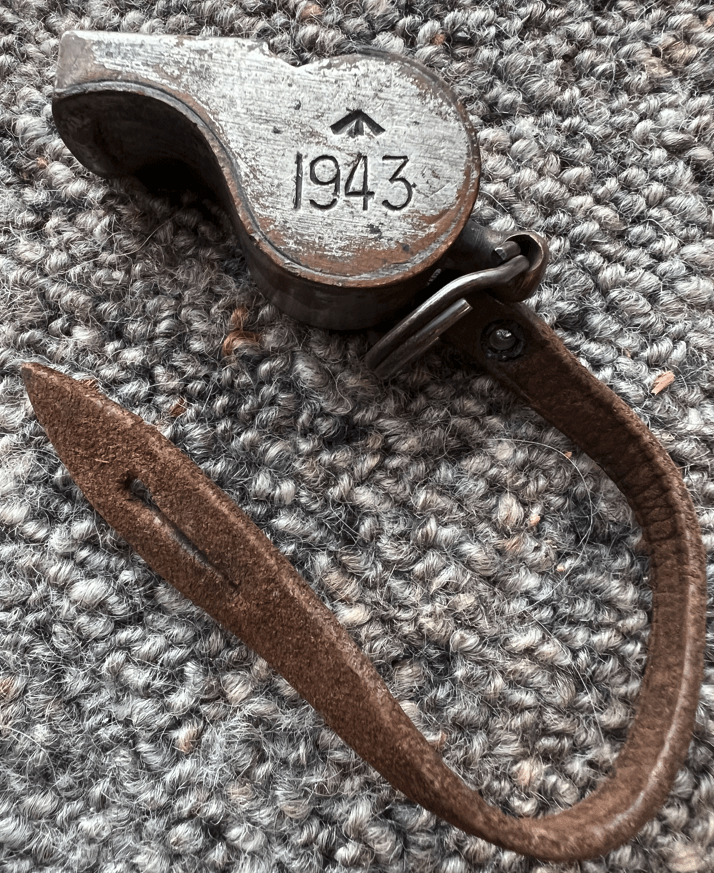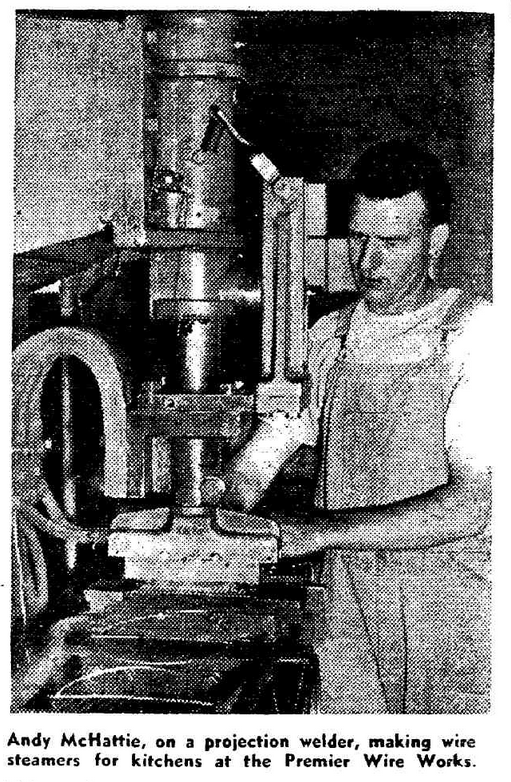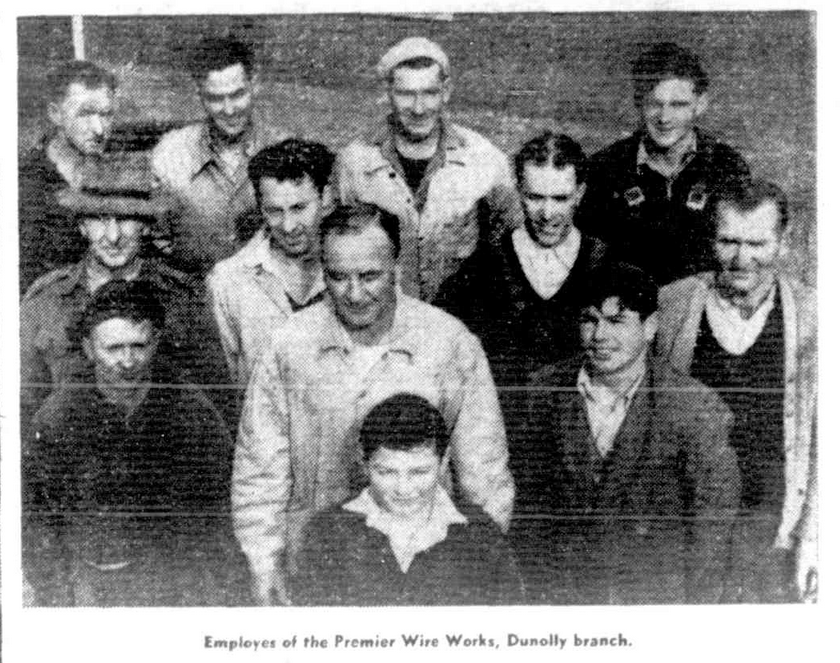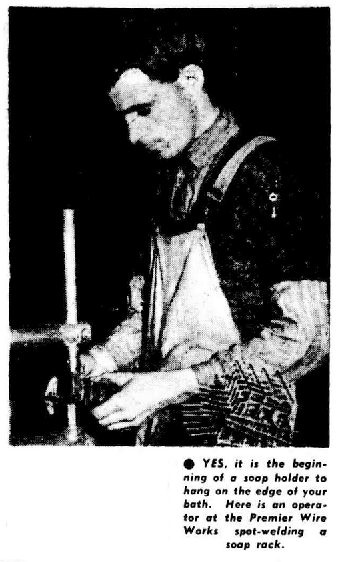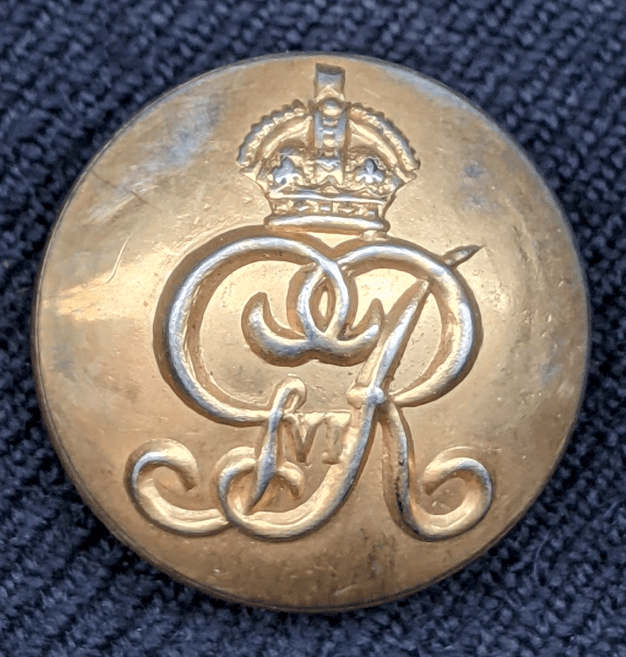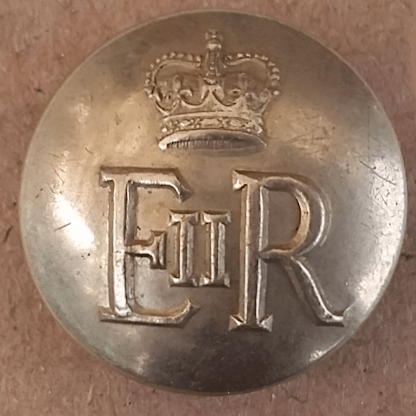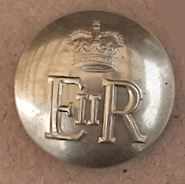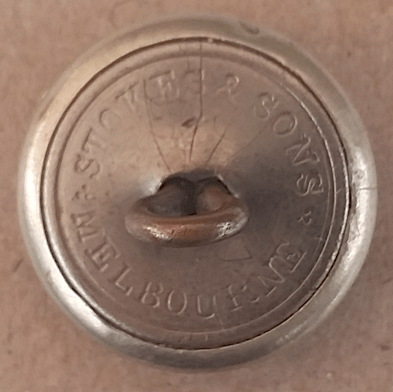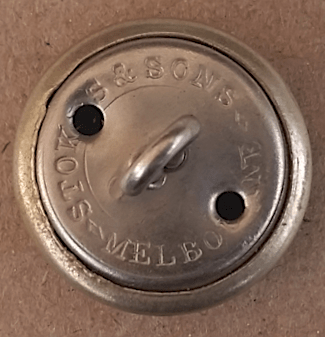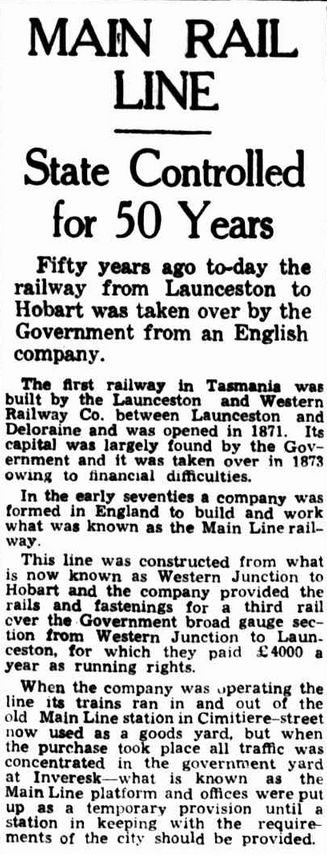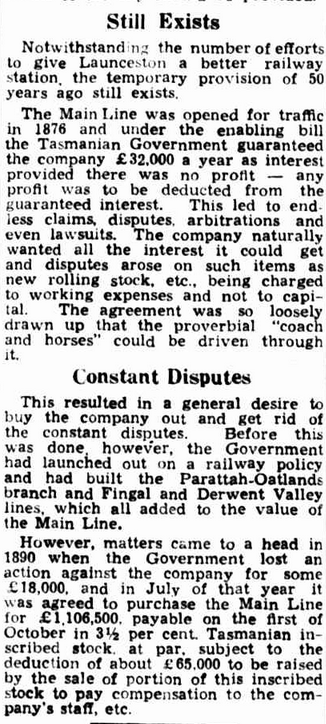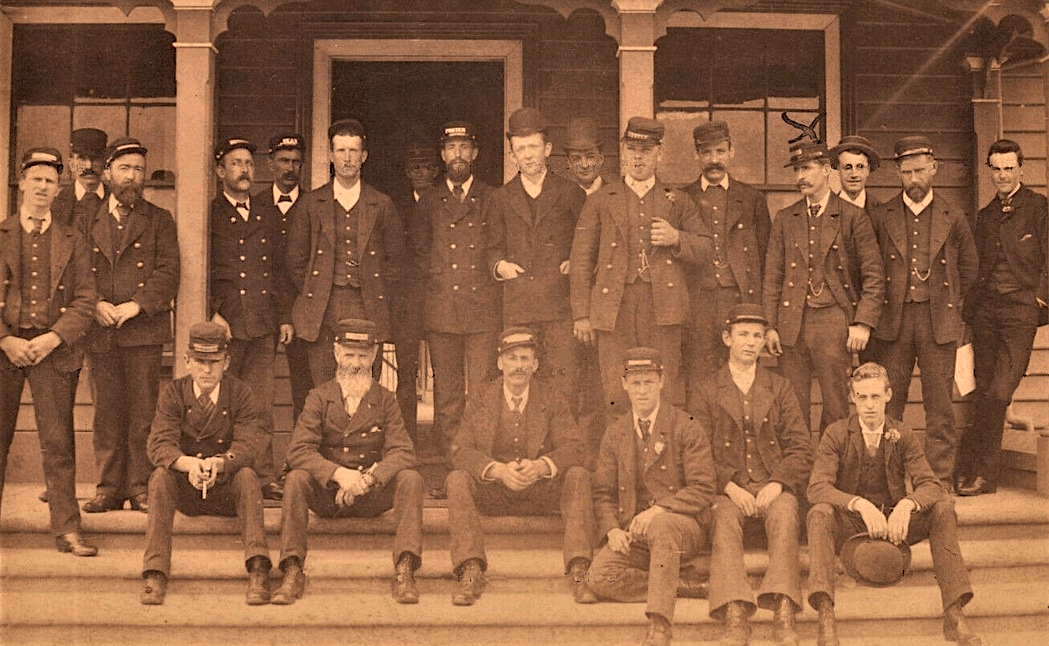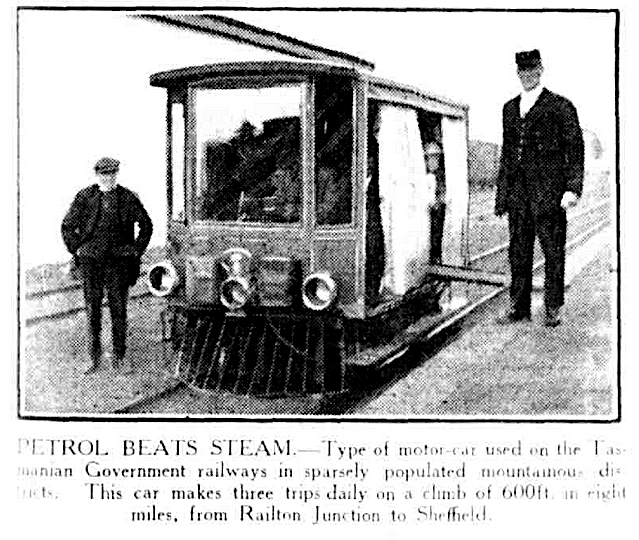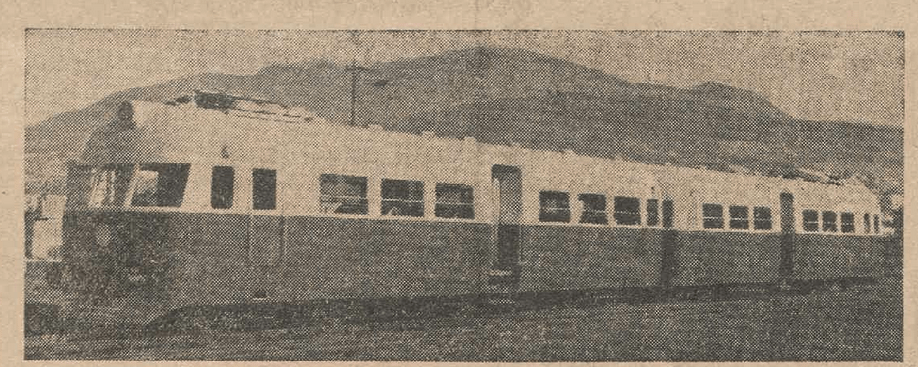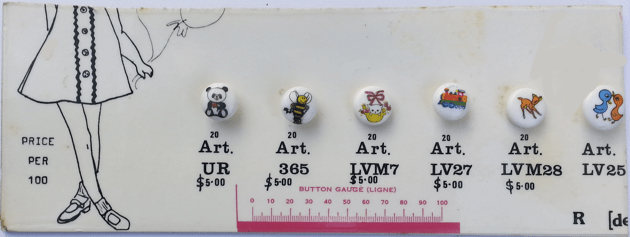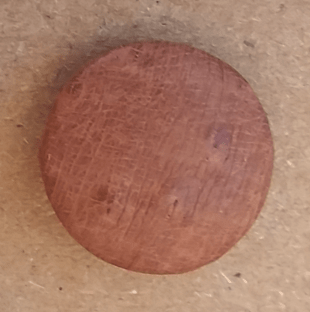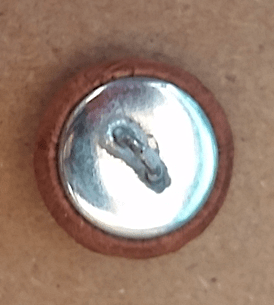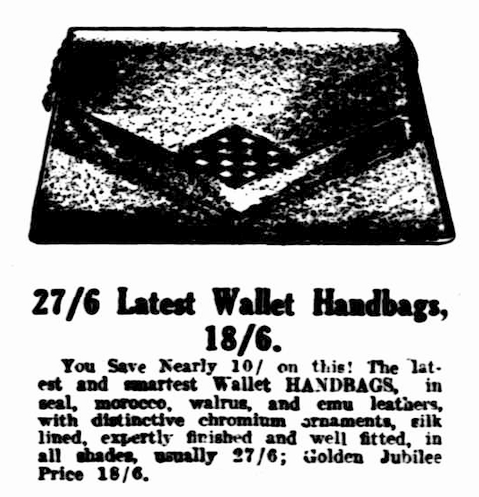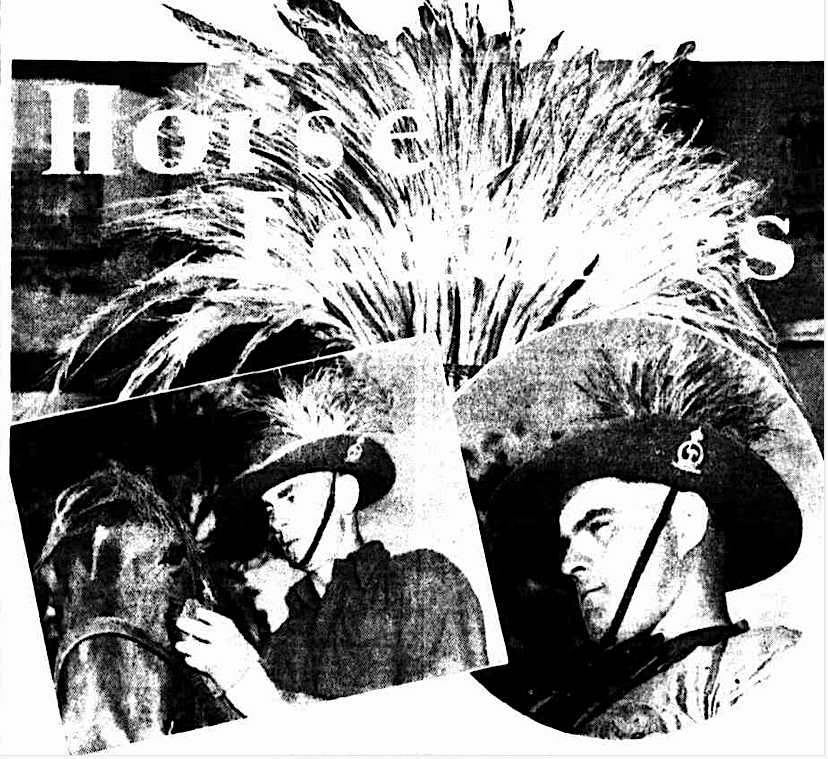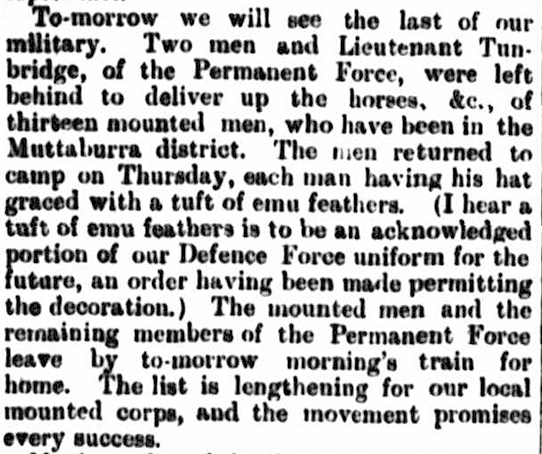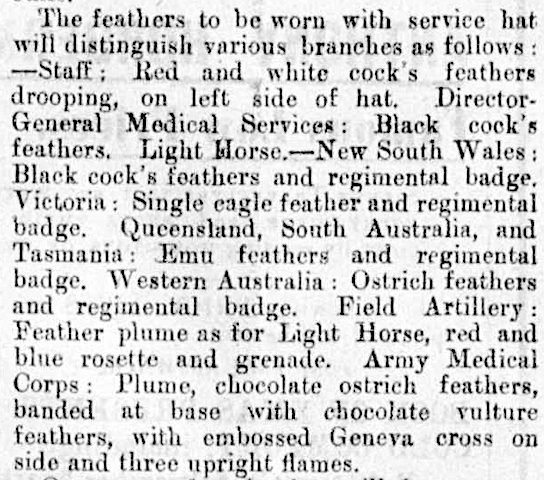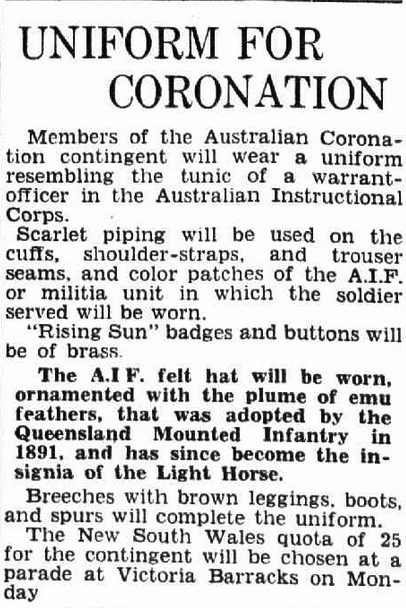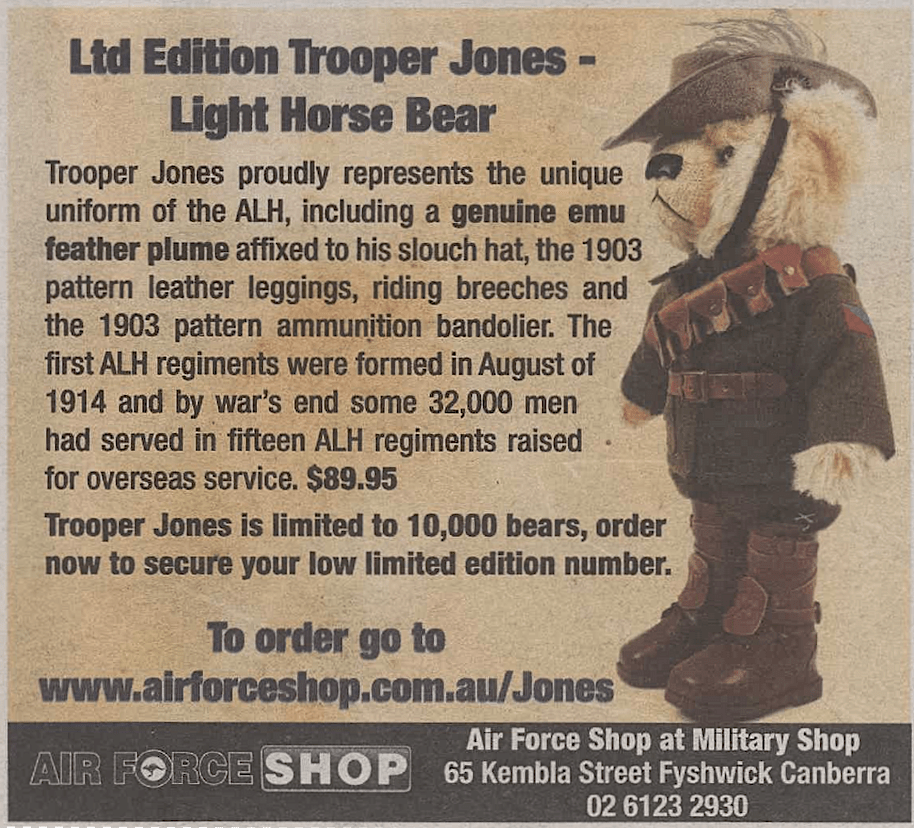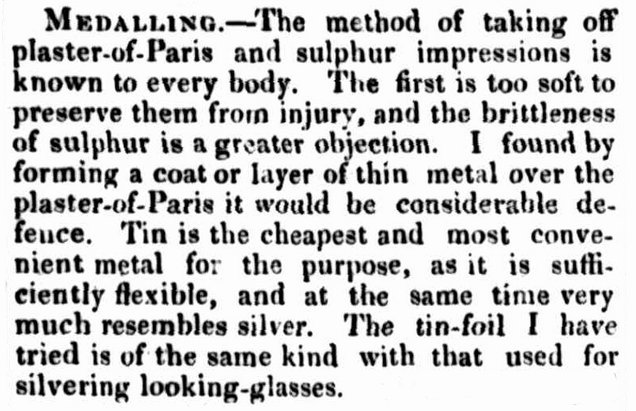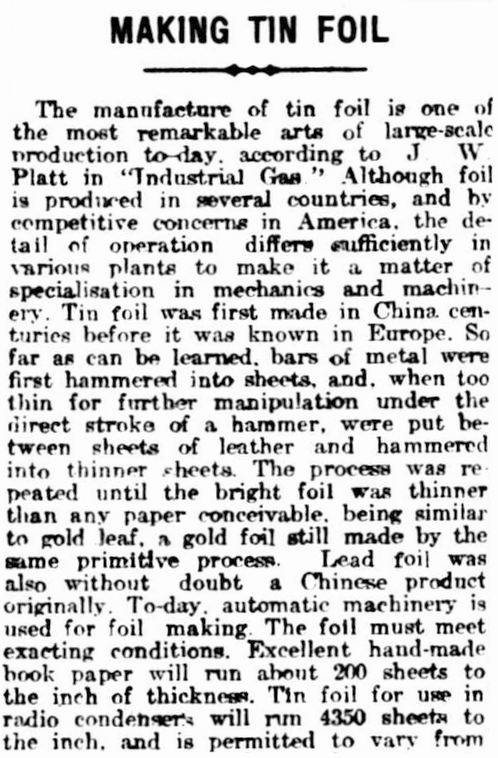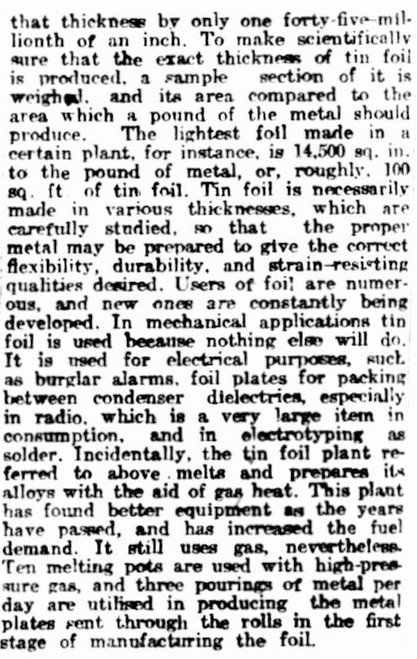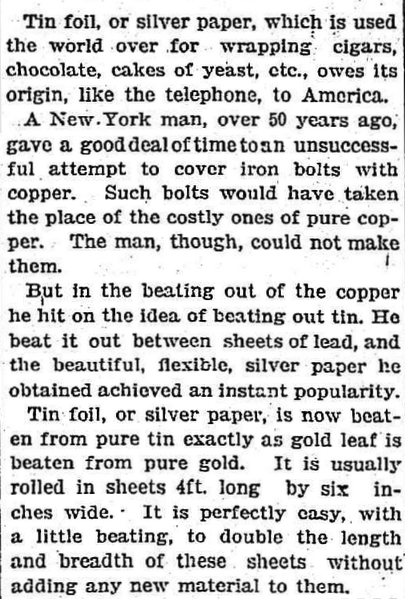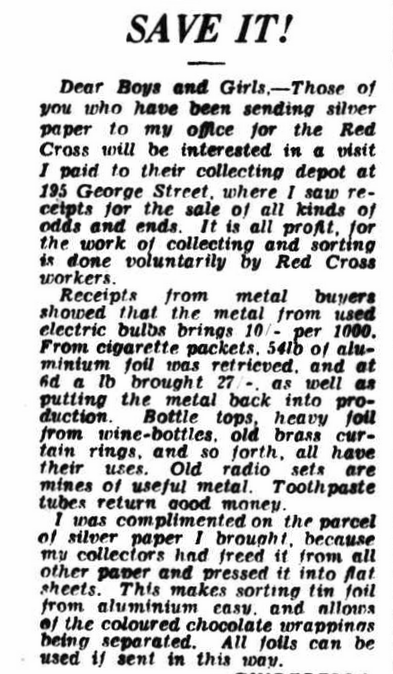Tailor’s Button
J. Bidencope Hobart Town
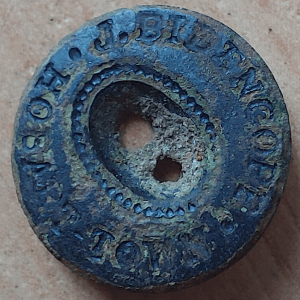
This trouser/pants/braces button shows just how a humble button, not intrinsically valuable, can shed light on history and be a fascinating object non-the-less.
Hobart Town
The British, motivated by their usual paranoia about the French, set up the first European settlement on the eastern shore of the Derwent River in 1803. In 1804 the settlement was moved to the current site of Hobart, and a penal colony was established with the military, settlers and convicts from the failed and abandoned Port Phillip settlement (which had been set up near present day Sorrento). The town was originally known as Hobart Town, or Hobarton, after Lord Hobart, the then British Secretary of State for war and the colonies. it was not until early 1881 that it was renamed Hobart.
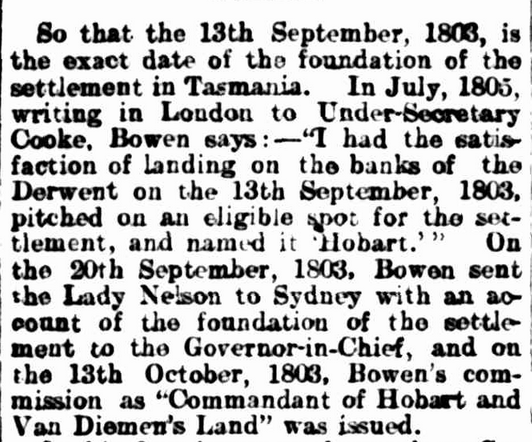
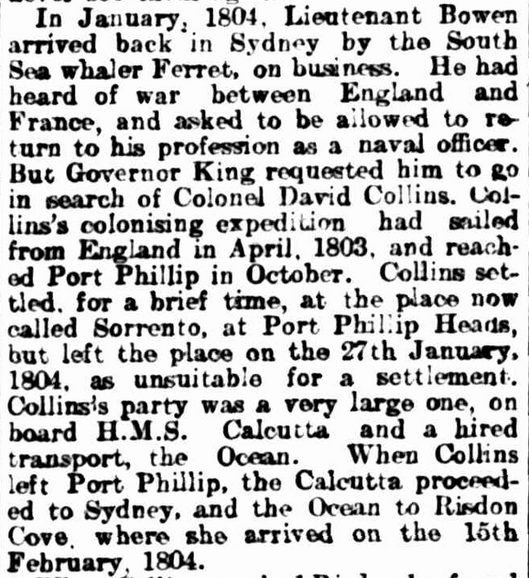
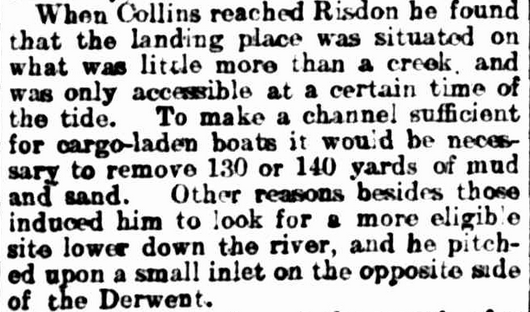
The Mercury (Hobart), 12th September 1903 page 1. Details from a longer article.
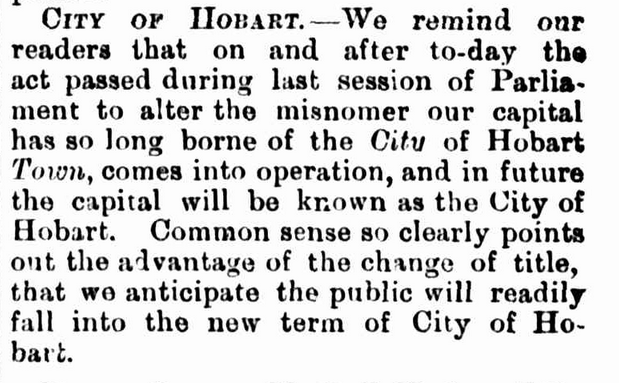
The Tasmanian (Launceston), 1st January 1881 page 14.
From the Australian Dictionary of Biography, https://adb.anu.edu.au/biography/bidencope-joseph-12797, it is claimed that Joseph Bidencope operated his own business from 1858 in Hobart Town. He advertised for the first time in September 1860, and by 1861 was describing himself as a naval and military tailor. He was also supplying government uniform contracts.

The Mercury (Hobart Town), 1st November 1861 page 3.
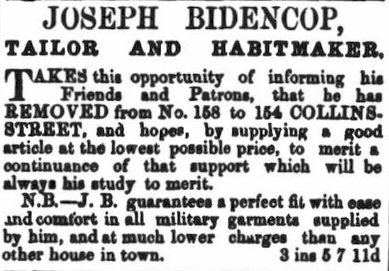
The Mercury (Hobart town), 5th December 1860 page 3.
In 1869 the firm moved to Murray Street and expanded into producing and selling hats, for which they became renown. In 1881, when Hobart town became Hobart, he was still trading as J. Bidencope.
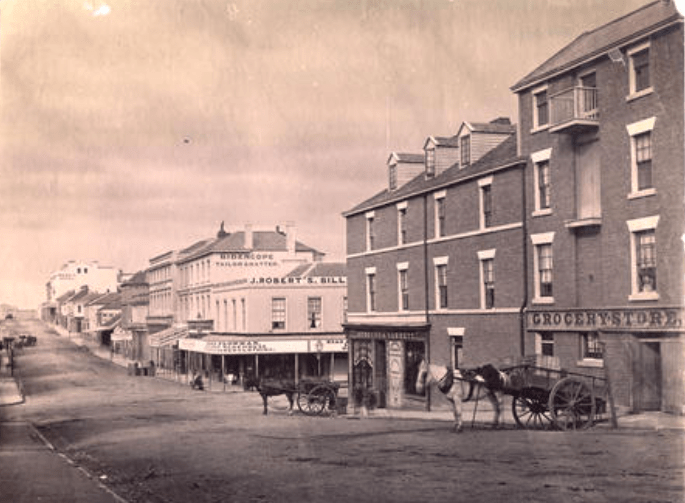
University of Tasmania collections (Image Number oai:sparc.utas.edu.au:UTASSPARC_14118, AU TAS UTAS SPARC W9-Ph-133-6) of Murray Street, c.1880, showing Bidendorps store near the centre.
It was not until 1887 the firm was quoted as ‘Bidencope and Son’, then in 1891 as ‘Bidencope & Sons’ . From 1913 until 1920 the firm was referred to as either Bidencopes Ltd or Bidencope & Son Ltd, then Bidencope & Son Pty ltd from 1921 until around 1979. The family had sold the business in 1977.
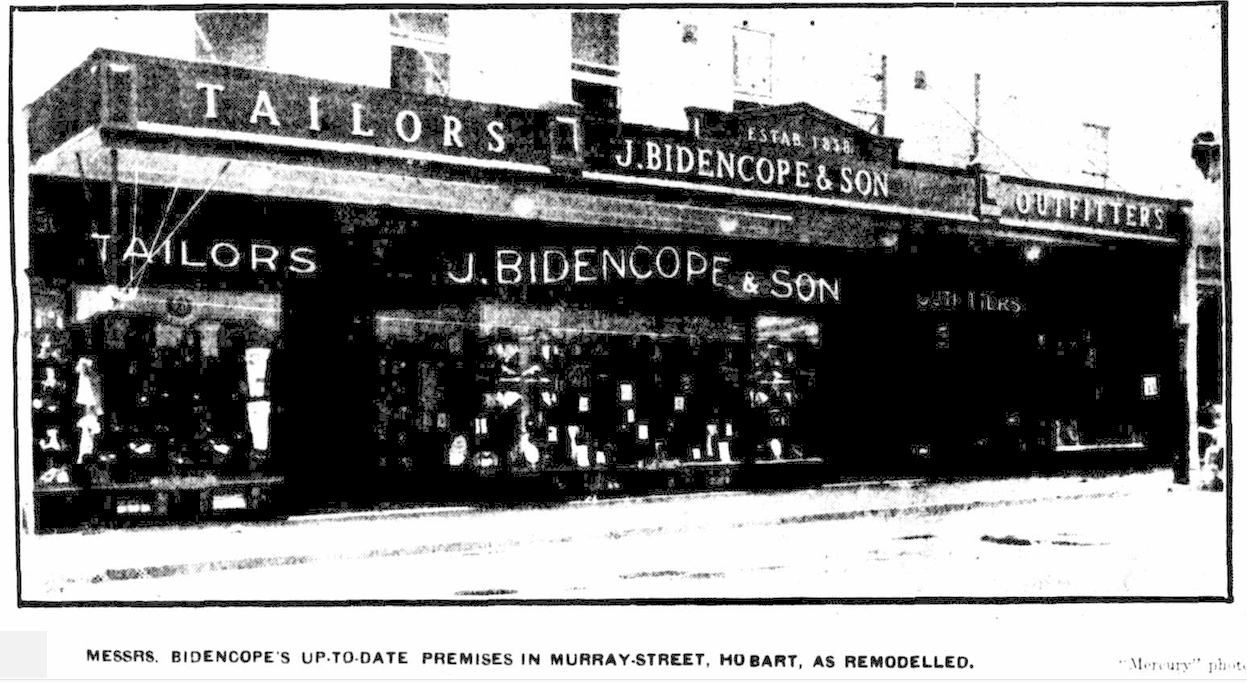
The Mercury (Hobart), 26th November 1924 page 5. The updated store in 1926. Above the entrance is the claim “Est. 1858”.
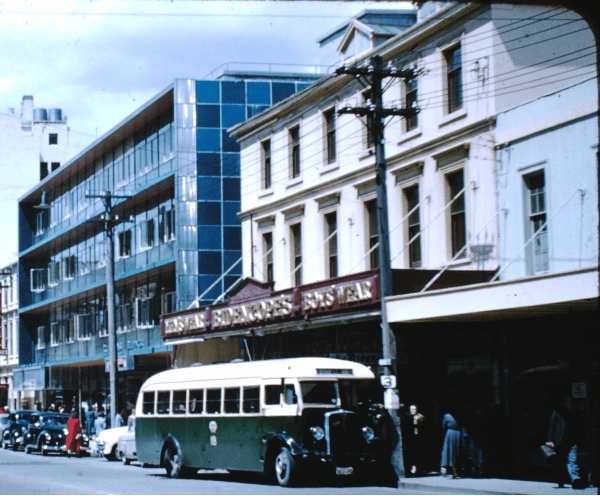
Libraries of Tasmania (Image Number oai:oai.statelibrary.tas.gov.au:NS6404-1-11) a bus in front of the store in 1956-7.
In 1994 R. M. Williams was applying to have Centrepoint Fashions Group Pty Ltd (trading as Bidencopes) wound up. Whether this happen, I cannot tell, however, a firm by the name of Bidencopes Pty Ltd was registered in 2020.
For a detailed history of the birth of Tasmania, from a newspaper edition at the celebration of its centenary: https://trove.nla.gov.au/newspaper/page/855171
See http://www.austbuttonhistory.com/branded-buttons/branded-buttons-tailors-buttons-a-h/#B for a button marked Bidencopes Ltd.
For any comment or questions, please use the Contact page.

